Europe’s new Ariane 6 rocket is set for its first-ever launch next week, carrying with it the continent’s hopes of regaining independent access to space and fending off soaring competition from Elon Musk’s SpaceX.
After four years of delays, the European Space Agency’s (ESA) most powerful rocket yet is finally due to blast off from Europe’s spaceport in Kourou, French Guiana, at 3:00 pm (1800 GMT) on July 9.
Since the last flight of the rocket’s workhorse predecessor, Ariane 5, a year ago, Europe has been unable to launch satellites or other missions into space without relying on rivals such as the US firm SpaceX.
Kourou was the site of launches by Russia’s Soyuz rockets for more than a decade, before Moscow withdrew them after invading Ukraine in 2022.
Later that year, Europe’s Vega-C light launcher was grounded after a launch failure. Delays to Ariane 6’s first flight—originally scheduled for 2020—compounded the crisis.
“Everything that could go wrong went wrong,” ESA chief Josef Aschbacher said.
That is why “Ariane 6 is crucial for Europe,” he added. “It’s absolutely mandatory for Europe to have an independent access to space.”
After the struggles of the 4.5-billion-euro ($4.8 billion) program, Europe’s space industry has been nervously observing the run-up to the launch.
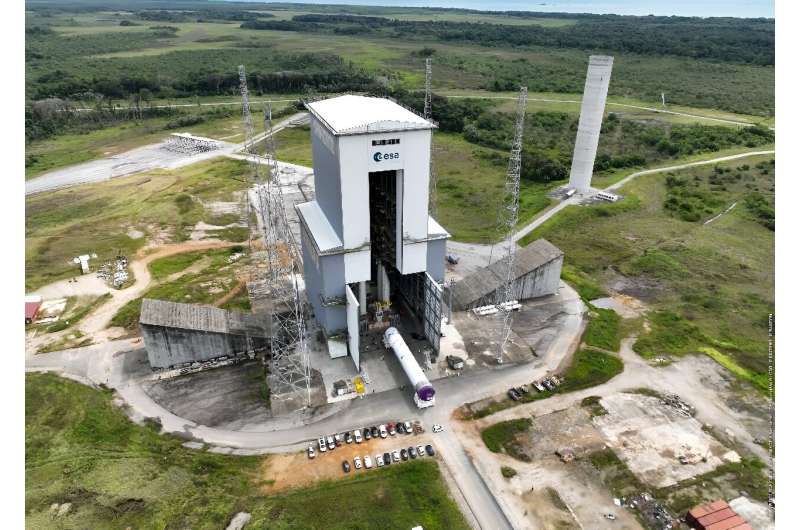
A “wet dress rehearsal” late last month ran through all the launch procedures, right up to the moment before the engines ignite on the launchpad.
It went “very smoothly… like a Swiss watch,” ESA space transportation acting director Toni Tolker-Nielsen said, adding that there was nothing to call the launch date into question.
‘Important moment’
Ariane 6 will put satellites into geostationary orbit, which appears stationary by matching Earth’s speed at 36,000 kilometers (22,000 miles) above Earth. It can also launch constellations a few hundred kilometers up.
The rocket’s upper stage, powered by the Vinci engine, ignites after take-off to place satellites in orbit before falling into the Pacific Ocean—a special feature to prevent space debris.
Ariane 6’s first launch will use two boosters, with a more powerful four-booster version scheduled for liftoff in the middle of next year.
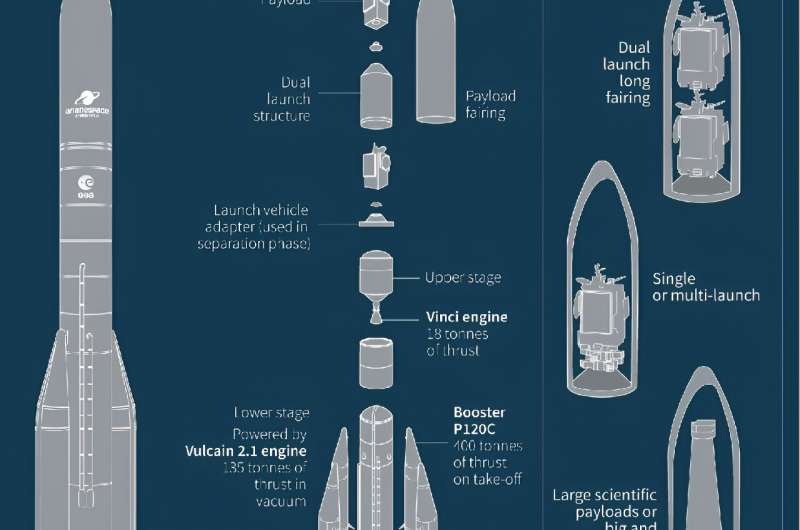
However, the boosters and other parts of the rocket are not reusable—unlike SpaceX’s Falcon 9 rocket.
Billionaire Musk has repeatedly criticized Ariane 6 for not being reusable.
The European response has been that it would not make economic sense for the rocket to be reusable because it was designed for far fewer launches than the Falcon 9.
The rocket will initially carry out nine launches a year—a far cry from the Falcon 9, which managed 14 in May alone.
The rocket’s inaugural flight will carry 18 different smaller items, including university micro-satellites and scientific experiments.
Its first commercial flight is scheduled for later in 2024, with 14 more planned over the next two years.
Shock late cancellation
One positive for Ariane 6 is that space business is booming.
The amount spent on launchers, satellites and other parts of the space economy is projected to surge to $822 billion by 2032, up from $508 billion last year, according to consulting firm Novaspace.
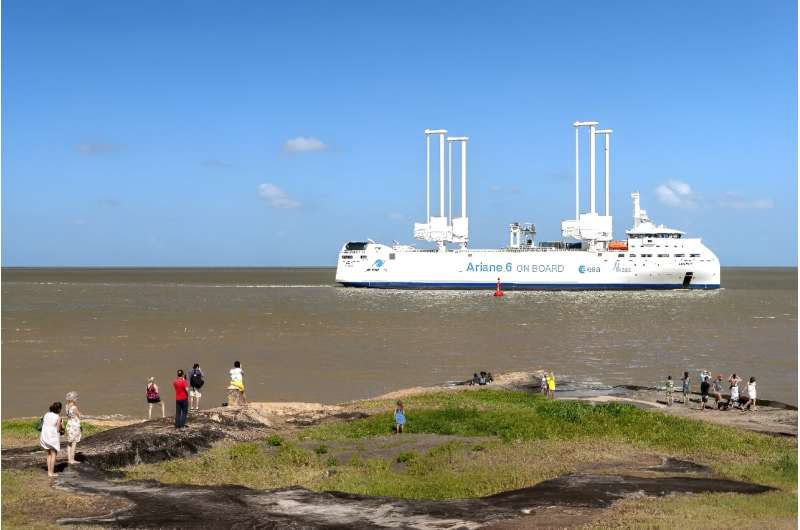
But this has not yet been enough to make Ariane 6 profitable.
The financing for the first 15 launches has been secured.
But the ESA’s 22 member states have agreed to subsidize the rocket for up to 340 million euros a year from its 16th to 42nd flights—in return for an 11 percent discount.
Ariane 6 already has an order book of 30 missions, including 18 to deploy some of Amazon’s Kuiper constellation of internet satellites.
“That is absolutely unprecedented for a rocket that has not flown,” said Stephane Israel, CEO of launch service provider Arianespace.
However, just days before the inaugural flight, Europe’s weather satellite operator EUMETSAT cancelled plans to use the European Ariane 6 in favor of SpaceX’s Falcon 9, citing “exceptional circumstances”.
Philippe Baptiste, head of France’s CNES space agency, called it “a very disappointing day for European space efforts”.
-
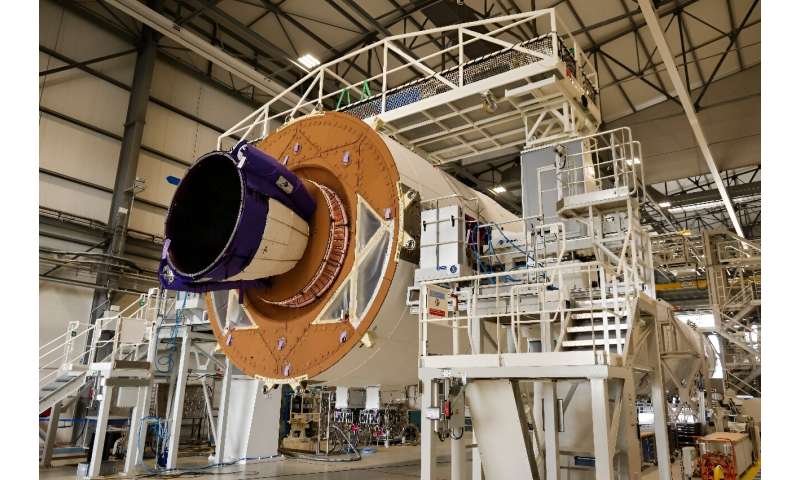
The rocket’s massive Vulcain engine, pictured in Kourou before the launch.
-
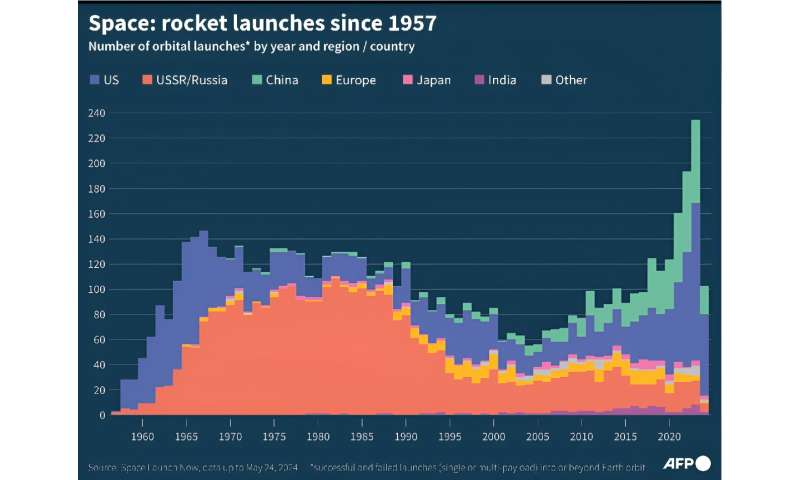
Rocket launches since 1957.
Faced with such stiff competition, the challenge for Ariane 6 will be to survive in a “market that needs rockets”, ArianeGroup CEO Martin Sion said.
After all, Ariane 6 is “Europe’s sovereignty launcher”, he added.
© 2024 AFP
Citation:
Europe’s Ariane 6 rocket finally ready for liftoff (2024, July 2)
retrieved 2 July 2024
from
This document is subject to copyright. Apart from any fair dealing for the purpose of private study or research, no
part may be reproduced without the written permission. The content is provided for information purposes only.